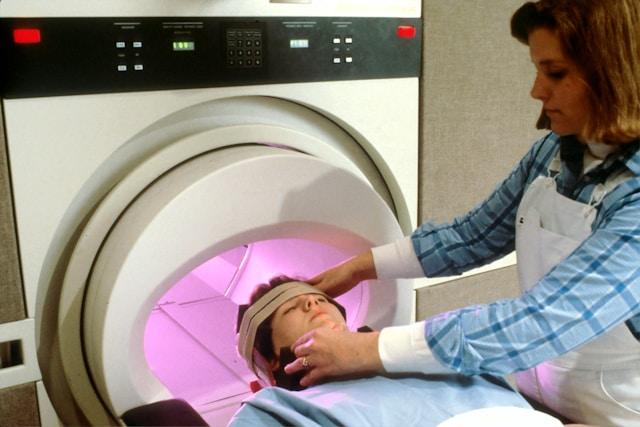-
3. Common Causes: Repetitive Strain and Genetic Predisposition
-
5. Diagnosing Carpal Tunnel Syndrome: Tests and Examinations
-
6. Non-Surgical Treatment Options: Braces and Lifestyle Changes
-
9. The Impact of Technology on Carpal Tunnel Syndrome Incidence
Ever wondered what’s causing that tingling sensation in your hand? It might be carpal tunnel syndrome. But fret not, we’ve got you covered with all you need to know about this common condition. From symptoms and risk factors to treatment options and prevention tips, consider this your ultimate guide to understanding carpal tunnel syndrome.
So buckle up and scroll down for a deep dive into the world of carpal tunnel syndrome. Get ready to arm yourself with knowledge and take charge of your hand health!

1. Definition and Symptoms of Carpal Tunnel Syndrome
Carpal tunnel syndrome involves numbness, tingling, and weakness in the hand and arm due to compression of the median nerve. This condition commonly leads to pain, a burning sensation, and difficulties with gripping objects. The carpal tunnel itself is a narrow pathway located in the wrist that houses both the median nerve and tendons crucial for hand movement.
Understanding carpal tunnel syndrome is essential for patients as early detection can prevent further complications like muscle wasting or permanent nerve damage. If left untreated, this syndrome can significantly impact daily activities that require fine motor skills such as writing or typing on a keyboard.
It’s vital to recognize the signs promptly; seeking medical advice when experiencing persistent symptoms like wrist pain or discomfort is advisable. Treatment options range from lifestyle modifications to surgical interventions depending on the severity of the condition for patients.
2. The Role of the Median Nerve
The median nerve plays a crucial role in providing sensation to specific areas of the hand and controlling certain muscles.
-
It is responsible for transmitting feeling to the palm side of the thumb, index, middle, and part of the ring finger.
-
It manages some muscle movements at the base of the thumb.
When this nerve undergoes compression or irritation, it can result in symptoms commonly associated with carpal tunnel syndrome such as numbness and weakness in these particular areas.
Understanding how this nerve functions and its distribution across the hand is essential in comprehending how carpal tunnel syndrome affects patients who experience issues related to median nerve compression.
3. Common Causes: Repetitive Strain and Genetic Predisposition
Repetitive hand motions, such as typing or using vibrating tools, are significant contributors to carpal tunnel syndrome. The continuous strain on the wrist can lead to inflammation and compression of the median nerve, causing symptoms like pain and numbness in the fingers.
Genetic predisposition plays a role in some patients developing carpal tunnel syndrome. Research suggests that certain anatomical variations in the wrist’s structure may increase susceptibility to this condition.
Moreover, hormonal changes during pregnancy can also put extra pressure on the median nerve, leading to an increased risk of carpal tunnel syndrome. Health conditions like diabetes or arthritis can exacerbate symptoms by causing swelling and putting further pressure on the nerves.
Understanding these common causes is crucial for prevention strategies and early intervention. By addressing repetitive strain through ergonomic adjustments at workstations or seeking genetic counseling for those with a family history of carpal tunnel syndrome, individuals can mitigate their risk factors significantly.
4. High-Risk Groups: Gender, Age, and Occupation Factors
-
Women have a higher likelihood of developing carpal tunnel syndrome compared to men. This gender difference is attributed to anatomical variances in the wrist that predispose women to compression of the median nerve.
-
The risk of carpal tunnel syndrome escalates with age, especially beyond 40 years old. As individuals grow older, tissues may become more susceptible to inflammation and swelling within the confined space of the carpal tunnel.
-
Occupations involving repetitive hand movements or prolonged use of vibrating tools are at an increased risk for developing carpal tunnel syndrome. Jobs such as assembly line workers, data entry personnel, musicians, and construction workers often require continuous wrist flexion or extension motions that can strain the median nerve over time.
5. Diagnosing Carpal Tunnel Syndrome: Tests and Examinations
A physical examination for carpal tunnel syndrome may involve specific tests like Tinel’s sign or Phalen’s maneuver, which help assess symptoms effectively.
Nerve conduction studies play a crucial role in diagnosing carpal tunnel syndrome by measuring how well electrical impulses travel along the median nerve.
Electromyography (EMG) is another valuable test that can assist in determining if there is any muscle damage associated with carpal tunnel syndrome, providing deeper insights into the condition.
These diagnostic tests are essential in confirming the presence of carpal tunnel syndrome and guiding healthcare providers in developing appropriate treatment plans tailored to each patient’s unique needs.
6. Non-Surgical Treatment Options: Braces and Lifestyle Changes
Wearing wrist splints or braces is a key conservative therapy for managing carpal tunnel syndrome symptoms as they maintain the wrist in a neutral position, reducing pressure on the median nerve.
Ergonomic adjustments to workstations play a crucial role in preventing and alleviating carpal tunnel syndrome by decreasing strain on the wrists. Regular breaks during repetitive tasks can also help reduce the risk of developing symptoms.
Physical therapy exercises are often recommended to strengthen muscles around the wrist and improve flexibility, contributing to better overall hand function. Lifestyle modifications like weight management can further aid in reducing pressure on the nerves, potentially easing symptoms over time.
7. Surgical Treatments: When Surgery Is Necessary
When non-surgical treatments fail to bring relief over a few months, surgery becomes a consideration for carpal tunnel syndrome. Carpal tunnel release surgery is the primary surgical procedure aimed at alleviating pressure on the median nerve by cutting the pressing ligament.
There are two main types of carpal tunnel release surgeries: open release and endoscopic release. Open release involves making an incision in the palm to access and cut the ligament directly, while endoscopic release utilizes a tiny camera and specialized tools inserted through small incisions for a less invasive approach.
Endoscopic methods generally result in quicker recovery times compared to open procedures due to smaller incisions and reduced trauma to surrounding tissues. However, each method has its own set of considerations, risks, and benefits that should be discussed thoroughly with healthcare providers before making a decision.
In cases where symptoms persist or worsen despite conservative measures, understanding these surgical options can offer hope for those suffering from severe carpal tunnel syndrome symptoms that significantly impact daily activities.
8. Prevention Tips: Ergonomics and Breaks
Maintaining proper ergonomics while working is crucial in preventing carpal tunnel syndrome. Correct posture and wrist positioning can significantly reduce the strain on your hands and wrists, lowering the risk of developing this condition.
Taking regular breaks during computer use to rest and stretch your hands and wrists is essential. These breaks allow for improved blood circulation, reducing stiffness and tension in the muscles that can lead to carpal tunnel syndrome over time.
Using ergonomic tools such as wrist rests, ergonomic keyboards, or vertical mice designed to minimize strain on your hands and wrists can be highly beneficial. These tools help maintain a more natural hand position while working, decreasing pressure on the median nerve running through the carpal tunnel.
Remember, prevention is key. By incorporating these simple tips into your daily routine—correct ergonomics, frequent breaks for stretching, and utilizing ergonomic tools—you can significantly lower your chances of experiencing this painful condition associated with repetitive hand movements.
The Impact of Technology on Carpal Tunnel Syndrome Incidence.
Increased use of computers, smartphones, and other electronic devices has led to a rise in carpal tunnel syndrome cases. Prolonged typing or repetitive finger movements while using technology can strain the wrists, contributing significantly to this condition.
Awareness of proper hand positioning is crucial when using these devices extensively. Taking breaks from technology can help alleviate the strain on your wrists and lower the risk of developing carpal tunnel syndrome.
It’s essential to be mindful of ergonomics while working with technology for extended periods. Simple adjustments like maintaining a neutral wrist position and ensuring your workspace is set up correctly can make a significant difference in preventing or reducing the impact of carpal tunnel syndrome.
Regular stretching exercises targeted at strengthening the muscles in your hands and wrists can also play a vital role in mitigating the effects of prolonged device usage on your wrist health.
10. Long-Term Prognosis and Quality of Life Adjustments
Most individuals with carpal tunnel syndrome show symptom improvement with proper treatment. Factors like severity, underlying health conditions, and adherence to preventive measures influence the long-term prognosis. By making adjustments in daily activities, work habits, and self-care routines, quality of life can significantly improve for those with carpal tunnel syndrome.
-
Improvement Post-Treatment: Effective treatments can lead to a reduction in symptoms for many patients.
-
Factors Influencing Prognosis: The severity of the condition along with other health issues play a crucial role in determining the long-term outlook.
-
Quality of Life Enhancements: Simple changes in lifestyle choices and ergonomics at work can make a substantial difference in managing symptoms effectively.
Adhering to medical advice, using ergonomic tools, taking breaks during repetitive tasks are some ways patients can positively impact their prognosis. It is essential for individuals diagnosed with carpal tunnel syndrome to be proactive about their care and make necessary adjustments to prevent further complications or worsening symptoms over time.
Closing Thoughts
You’ve now grasped the ins and outs of carpal tunnel syndrome, from its sneaky symptoms to the crucial role of the median nerve. We’ve delved into causes, treatments, prevention, and even the tech factor. Remember, early detection and lifestyle adjustments can be game-changers in managing this condition. So, keep an eye out for those warning signs and make ergonomic tweaks where you can.
In a world where typing and swiping dominate our days, it’s vital to give our wrists some TLC. Don’t wait until discomfort turns into a full-blown issue. Take breaks, stretch those fingers, and set up your workspace with care. Your wrists will thank you in the long run! Stay informed, stay proactive, and keep those hands happy.
Frequently Asked Questions
What are the common symptoms of Carpal Tunnel Syndrome?
Carpal Tunnel Syndrome commonly presents with symptoms like numbness, tingling, and weakness in the hand and fingers. Patients may also experience pain that radiates up the arm or have difficulty gripping objects.
Is Carpal Tunnel Syndrome more prevalent in certain age groups?
While Carpal Tunnel Syndrome can affect individuals of any age, it is more commonly seen in adults between 30 to 60 years old. Older individuals may be at a higher risk due to degenerative changes in the wrist.
Can lifestyle changes help alleviate Carpal Tunnel Syndrome symptoms?
Yes, making lifestyle adjustments such as maintaining proper ergonomics at workstations, taking regular breaks during repetitive tasks, and performing hand exercises can help reduce symptoms and prevent worsening of Carpal Tunnel Syndrome.
How do ergonomic practices contribute to preventing Carpal Tunnel Syndrome?
Ergonomic practices involve optimizing workspace setups to reduce strain on the hands and wrists. This includes using ergonomic tools like keyboards and mice designed to promote neutral wrist positions, thus decreasing the likelihood of developing Carpal Tunnel Syndrome.
Are there long-term complications associated with untreated Carpal Tunnel Syndrome?
If left untreated, Carpal Tunnel Syndrome can lead to permanent nerve damage and muscle wasting in severe cases. Seeking timely medical intervention is crucial to prevent long-term complications and improve overall quality of life.
























